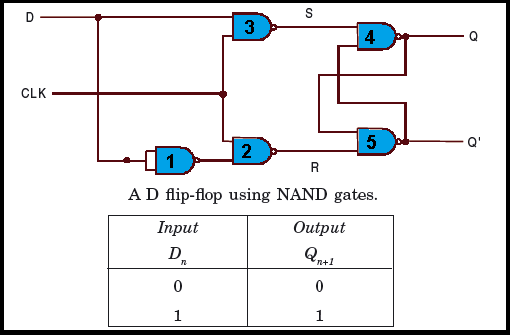An analog to digital converters, or A/D converter, is the reverse system of a D/A converter. It converts an analog signal to its digital form. In my early post we discussed on how a digital to analog converters works? Now in this post we will see how an analog to digital converters works?
How an analog to digital converters works?
As name suggests we can understand that it will convert analog signal into digital one. So the inputs of this converter will be analog signals and output will be in digital form. In an analog to digital converter, the input analog voltage may have any value in a range. And it will produce the digital output of 2N number of discrete values for an N-bit converter. Therefore, the whole range of analog voltage is required to be represented suitably in 2N intervals, and each of the intervals corresponds to a digital output.
Working Process
Let us take an example of analog to digital converters, consider that an analog voltage range of 0 to V is represented by 3-bits digital output. As we know that a N-bit system can produce 2N different digital output. So 3-bit digital system can generate 23 = 8 different digital outputs. And so for the full analog range will be divided into 8 intervals. Each interval of voltage of the size of V/8 assigned unique digital value. This process actually called quantization. In bellow figure we will see the interval of analog voltage and their corresponding digital representations.
If we carefully observed the above figure then we can find that a complete voltage interval represented by a digital value, irrespective of any voltage value within the interval. Therefore, there involves always some error while converting any analog voltage interval to its digital value. And it referred to as quantization error.
Again if we concentrate on above figure then we can observed, the voltage interval 0 to 1/8 V assigned to the digital value 000. And voltage interval 1/8 V to 2/8 V assigned to digital value 001, and so on. Also, it may be noted from the figure that the maximum quantization error is E = 1/8 V. This quantization error may be reduced if the analog voltage interval limits are considered a different way. Let us choose the size of voltage interval as 1/7 V, except the top and bottom intervals which are 1/14 V.
Let’s check how you learn “analog to digital converters” with a simple quiz.
0 of 5 questions completed Questions: Analogue to Digital Converter You have already completed the quiz before. Hence you can not start it again. Quiz is loading... You must sign in or sign up to start the quiz. You have to finish following quiz, to start this quiz: 0 of 5 questions answered correctly Time has elapsed You have reached 0 of 0 points, (0) The time taken by the ADC from the active edge of SOC(start of conversion) pulse till the The popular technique that is used in the integration of ADC chips is Which is the ADC among the following? The number of inputs that can be connected at a time to an ADC that is integrated with The conversion delay in successive approximation of an ADC 0808/0809 isADC
Quiz-summary
Information
Results
Average score Your score Categories
1. Question
active edge of EOC(end of conversion) signal is called 2. Question
3. Question
4. Question
successive approximation is 5. Question
You may read those too…..






